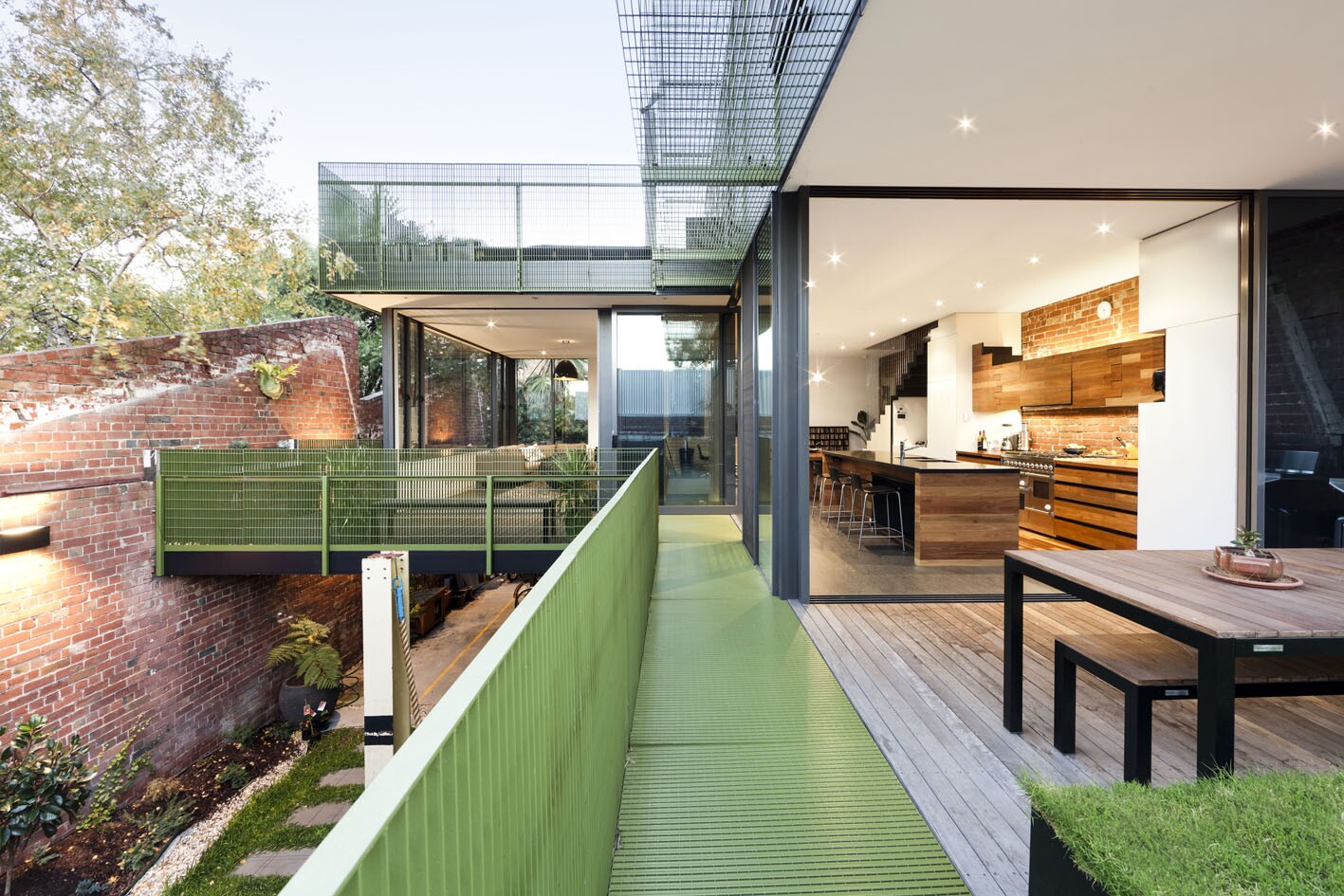House in a Warehouse, by Melbourne-based architectural practice Splinter Society, saw the transformation of a former industrial space into an efficient family home. The attractive property incorporates storm-water collection, passive cooling, and a computer controlled lighting system to reduce grid-based energy requirements.
The home is located within the shell of an old warehouse in Hawthorne East, Victoria. The client voiced a desire to turn the former industrial structure into a green space, while still retaining some of the original feel of the warehouse.
Splinter Society certainly met this remit, and the original building's south wall remains intact, with previous windows and cast brick vents still in place, but serving the new residence. The home stretches across three floors and incorporates two bedrooms, two living spaces, a study, kitchen, and several garden spaces.

Carefully-placed green steel screens reduce the sun's penetration, and offer increased privacy. Existing on-site materials were re-used wherever possible, lending environmental, aesthetic, and budgetary benefits. This included the reuse of existing beams as joinery, masonry walls, and steel columns into the new layout.
Additionally, the property features large water tanks which store collected storm-water to be later heated with a solar heater. All lighting throughout the house is controlled by an intelligent computer system to minimize electricity waste. House in a Warehouse also boasts a number roof gardens, each of which sport 50 cm (20 inches) of soil, providing additional thermal mass and insulation.
The home's small 195 sq m (2,100 sq ft) indoor space and three-floor design facilitates the drawing of cool air from the ground up in summer, while a combined solar chimney and heat pump system performs the reverse action and recycles heat back down to lower levels in colder months.
Source: Splinter Society















